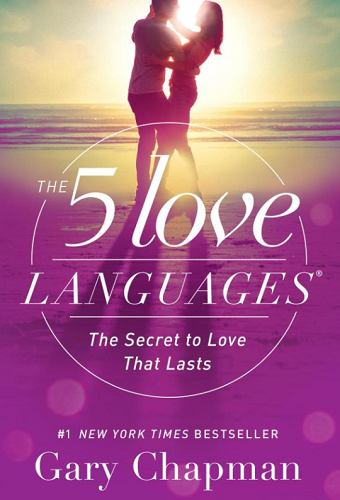The 5 Love Languages

“The 5 Love Languages: The Secret to Love that Lasts” by Gary Chapman is one of the most popular books that discuss ways to improve your marriage. You quickly realize that he uses “languages” to mean “ways you communicate your love with your spouse.” Or alternatively, “ways your spouse wants to be shown they’re loved.”
Words of Affirmation
The first of the 5 Love Languages is “Words of Affirmation.” These are your verbal or written ways to show your love, appreciation, and respect for your spouse. The simplest example is, “Thank you,” showing appreciation for what the other has done. How often do you thank your helpmate for preparing a meal, making the bed, or mowing the lawn?
Quality Time
The second “love language” is “Quality Time.” Do you spend time with your spouse? And not just while watching TV, where your focus may be on the show. But actually being together, in situations that the person wants to be in. One example was a spouse who liked to visit bookstores. The husband visited them with the wife, for her sake, as she loved them. You, or your spouse, may not be enthuasistic about what is done, but you should be willing to do it for them.
Receiving Gifts
The third language is “Receiving Gifts.” Some people are ecstatic if you give them a meaningful gift. I thought of the show, “Big Bang Theory,” in which Leonard gives Penny a snowflake from the Arctic, encased in plastic. It was not an expensive gift, but it meant a lot to her. You may be a spouse who gives flowers. Or “flours” that one romantic gave to a baker in “Stranger Than Fiction.” Think of all the things you made your Mom or Dad when you were little, and how they held onto them forever. The more it means to the recipient, the better.
Acts of Service
When you do something for your spouse, this is the fourth love language, “Acts of Service.” It might be cooking a meal, doing the laundry, taking the garbage out, helping the kids with their homework, or painting the bedroom. Whatever your spouse would appreciate you doing is an act of service. You may find that they are not massive undertakings. Many times, the little things add up.
Physical Touch
The final love language is “Physical Touch.” Mr. Chapman explains that babies who are held and kissed develop a healthier emotional life than those who do without physical contact for a long time. It may be as simple as holding hands, or an arm around a shoulder. Or it may be sex that your partner enjoys and craves. Different cultures have different levels of comfort with physical contact, especially before marriage.
It’s Not Just About You
One of the important things to realize is that you and your spouse may have different “love languages.” You may want to be told you’re appreciated (Words of Affirmation), while your spouse may want you to spend more time with them (Quality Time). What you want may not fulfill them, and what they want may not fulfill you. If you both realize what fulfills the other, you can get to a happier place in your relationship.
I found the book quite readable, and practicle, with suggestions in each chapter to put theory into practice. He describes an early session outside his church in which he asks a struggling couple to write down a few things they would most appreciate. The lists are different, and help identify each person’s preferred “love language.”
If you find yourself missing something in your marriage, or your spouse seems distant or unhappy, consider (re-)discovering each others’ love language. It may be the thing that reignites the joy in your marriage.
